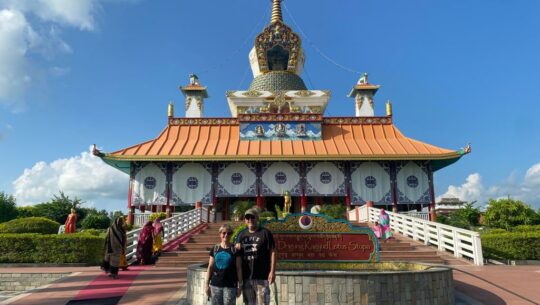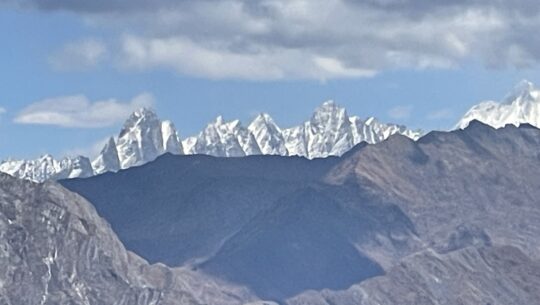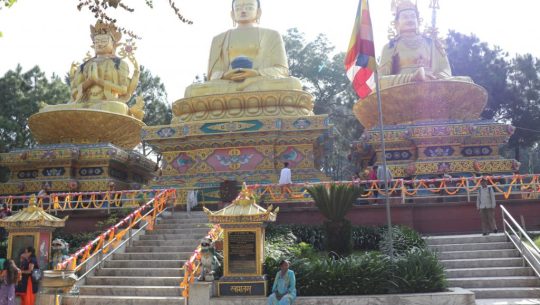Panchayan Puja and Shadchakra Chintan: A Deep Dive into Hindu Spiritual Practices
Hinduism, rich in rituals and spiritual traditions, offers various ways to connect with the divine and achieve inner harmony. Two such profound practices are Panchayan Puja and Shadchakra Chintan, which hold deep significance in balancing external devotion and inner spiritual awakening.
Panchayan Puja: Worship of Five Divine Forces
Panchayan Puja is a sacred Hindu ritual that involves the worship of five principal deities, each representing a unique aspect of cosmic energy. This practice, deeply rooted in the “Smartisem tradition” which follows the teachings of Adi Shankaracharya is commonly observed in Nepal and India.
The Five Deities of Panchayan Puja
- Shiva (शिव) – The lord of transformation, destruction, and regeneration.
- Vishnu (विष्णु) – The preserver of the universe, maintaining cosmic order.
- Devi (दुर्गा/लक्ष्मी/सरस्वती, etc.) – The divine mother, symbolizing power (Shakti) and nurturing energy.
- Surya (सूर्य) – The sun god, representing wisdom, vitality, and illumination.
- Ganesha (गणेश) – The remover of obstacles and the deity of new beginnings.
Why is Panchayan Puja Significant?
- It brings spiritual balance by honoring multiple divine forces.
- It fosters unity among different Hindu sects, as devotees can choose their Ishta Devata (preferred deity) while still acknowledging the others.
- It symbolizes the five great elements (Panchamahabhuta) – Earth, Water, Fire, Air, and Space representing the interconnectedness of all existence.
During the ritual, one deity is placed at the center, surrounded by the other four, reinforcing the idea that all divine forces are interconnected. This practice is a beautiful reflection of Hindu philosophy, which sees diversity in unity.
Shadchakra Chintan: Journey Through the Six Chakras
While Panchayan Puja is an external form of worship, Shadchakra Chintan is an inward journey of self-discovery and enlightenment. It refers to the meditative contemplation of the six chakras (energy centers) within the human body, as described in Yogic and Tantric traditions.
The Six Chakras and Their Significance
- Muladhara (Root Chakra) – Located at the base of the spine, it governs survival, security, and grounding.
- Svadhishthana (Sacral Chakra) – Situated below the navel, it influences creativity, emotions, and sensuality.
- Manipura (Solar Plexus Chakra) – Found in the stomach region, it controls confidence, personal power, and transformation.
- Anahata (Heart Chakra) – Centered in the chest, it radiates love, compassion, and emotional balance.
- Vishuddha (Throat Chakra) – Located in the throat, it governs communication, self-expression, and truth.
- Ajna (Third Eye Chakra) – Positioned between the eyebrows, it is linked to intuition, wisdom, and higher consciousness.
(Some traditions also recognize the Sahasrara (Crown Chakra) as the seventh chakra, representing enlightenment and divine connection.)
How is Shadchakra Chintan Practiced?
- Meditation (Dhyana): Focusing on each chakra to activate and balance its energy.
- Mantras: Chanting seed sounds (Bija mantras) associated with each chakra (e.g., “Lam” for Muladhara, “Vam” for Svadhishthana).
- Breathing Techniques (Pranayama): Using breath control to purify and harmonize energy flow.
- Visualization: Mentally picturing the colors, symbols, and vibrations of each chakra.
The Benefits of Shadchakra Chintan
- Enhances physical and mental well-being, bringing inner peace.
- Strengthens spiritual awareness, leading to self-realization.
- Helps in emotional balance, removing blockages in energy flow.
Conclusion: Balancing Devotion and Self-Realization
Both Panchayan Puja and Shadchakra Chintan offer a unique path toward spiritual fulfillment. While Panchayan Puja helps devotees connect with external divine forces, Shadchakra Chintan leads inward, guiding practitioners toward self-awareness and enlightenment. Together, they embody the harmony between Bhakti (devotion) and Dhyana (meditative self-awareness) two essential aspects of Hindu spirituality.






